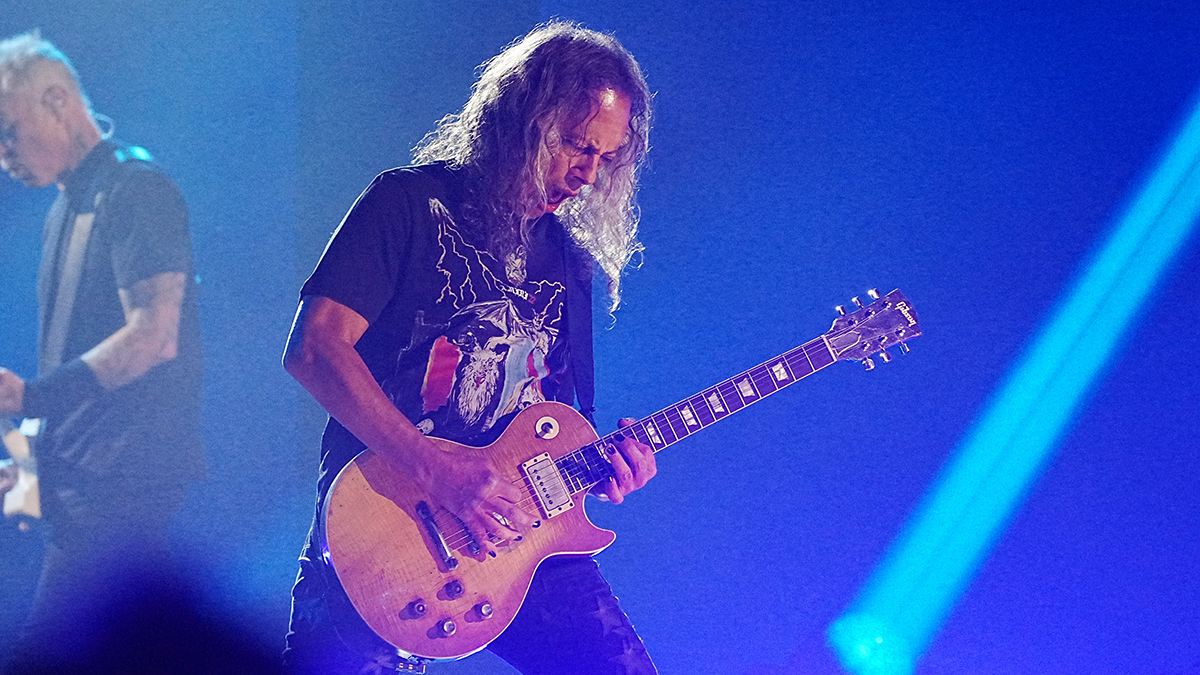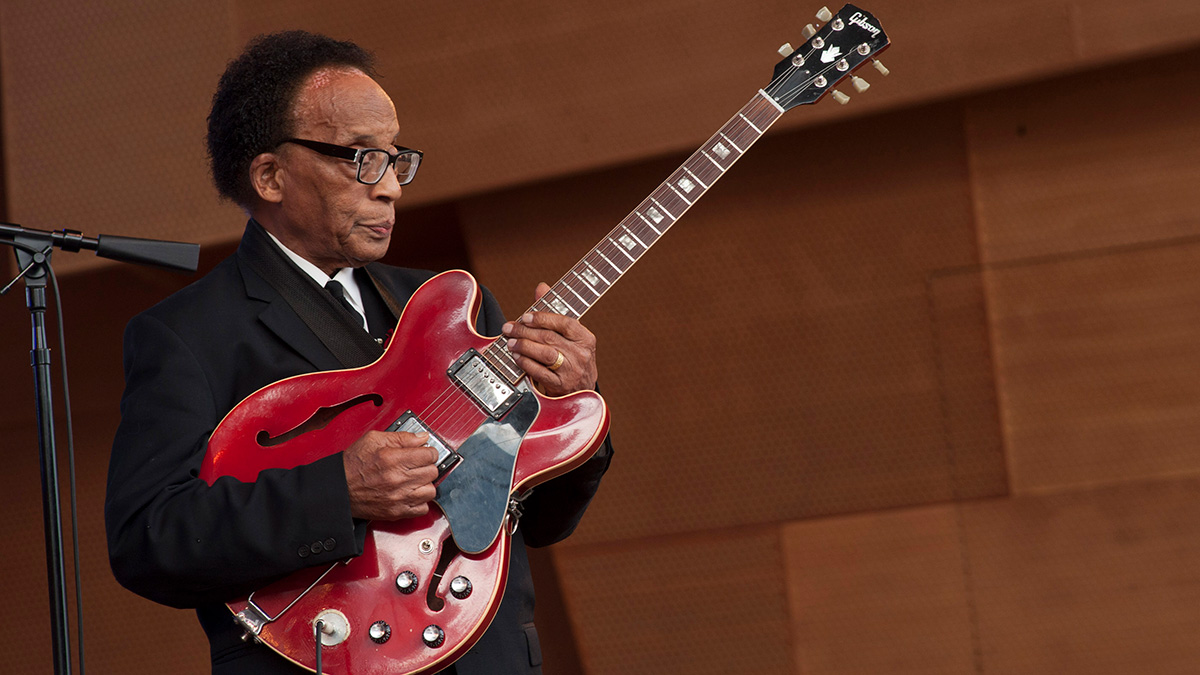Kirk Hammett reveals the secret weapon behind his guitar tone: “I can’t believe I’m telling you about it!”
The elusive piece of gear has sonic ties to Eddie Van Halen, AC/DC and Pink Floyd, and featured throughout new Metallica album 72 Seasons

Earlier this month, Metallica dropped 72 Seasons – their first album since 2016’s Hardwired… to Self-Destruct, and a triumphant return to James Hetfield, Kirk Hammett and co’s heavy metal universe.
The album itself has been the source of much discussion and speculation. First, it was all about that charred electric guitar on the album’s cover, and more recently, talk concerned itself with Hammett’s soloing on Lux Æterna – an effort that brought the trolls out in droves.
One agreeable constant throughout all these discussions, though, is that the tones on 72 Seasons are top-notch – and now, in an exclusive interview with Total Guitar, Hammett has revealed the “secret weapon” that’s the beating heart of his current guitar tone.
No, it’s not the wah pedal – that wouldn’t be much of a secret, after all. Rather, it’s a replica of the famed Schaffer Vega Diversity wireless system championed by the likes of AC/DC, Kiss, Pink Floyd and more throughout the mid-'70s.
Specifically, Hammett has been relying on the SoloDallas Schaffer Replica EX Tower unit as the secret sauce of his guitar tone, with the $1,749 unit helping him achieve his “super-dynamic lead sound”.
“It’s a type of preamp compression unit,” he explained. “People like Angus Young, David Gilmour and Eddie Van Halen were able to boost the output on that transmitter, hence Angus’s amazing guitar sound.”
The Schaffer-Vega Diversity System (SVDS) was developed by Ken Schaffer – who first observed the limitations of existing vocal wireless systems while on tour with the Rolling Stones in the ‘70s – and was devised in an effort to avoid wireless signal fades, interference and output lulls.
Get The Pick Newsletter
All the latest guitar news, interviews, lessons, reviews, deals and more, direct to your inbox!
However, not only was the SVDS the first wireless guitar system – setting the precedent for future devices – it also had a niche tone-enhancing circuitry, which meant many artists who used it live started taking it into the studio specifically to harness its sound.
Hammett continued, “So the Tower is a bit of a secret weapon – I can’t believe I’m telling you about it! It’s a large part of how I got that super-dynamic lead sound. It’s really full-sounding – there’s a lot of mid, but it doesn’t sound harsh or too bold or solid.
“The harmonic distortion is amazing. I hit a note on Greeny and it literally will never quit.”
As for how the SoloDallas unit fits into his wider rig, Hammett noted, “The tone on 72 Seasons is based on my live sound, which is a Fractal Axe-Fx modelled on a blend of my Fortin Meathead amp and my Dual Rectifier.
“We took that lead sound and tweaked a little EQ, added the Tower and we’re good to go. Maybe there’s a Tube Screamer in there also, because I just love that sound.”
Head over to Magazines Direct to pick up the latest issue of Total Guitar, which features the full-length interview with Metallica.
It was also recently revealed that James Hetfield used a “legendary” head modded by Eddie Van Halen’s amp wizard for every track on 72 Seasons.

Matt is the GuitarWorld.com News Editor. He has a Masters in the guitar, a degree in history, and has spent the last 16 years playing everything from blues and jazz to indie and pop. When he’s not combining his passion for writing and music during his day job, Matt records for a number of UK-based bands and songwriters as a session musician.
“I was in a frenzy about it being trapped and burnt up. I knew I'd never be able to replace it”: After being pulled from the wreckage of a car crash, John Sykes ran back to his burning vehicle to save his beloved '76 Les Paul
“His songs are timeless, you can’t tell if they were written in the 1400s or now”: Michael Hurley, guitarist and singer/songwriter known as the ‘Godfather of freak folk,’ dies at 83











